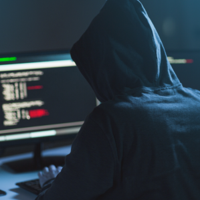Ransomware attacks hit Iowa schools, including Davenport, although public often left in dark
In the summer of 2019, school Superintendent Devin Embray learned the Glenwood District in Mills County, Iowa, was being held hostage by foreign ransomware attackers.
The hackers encrypted student data that included schedules, contact information and demographic information, making it inaccessible to the school’s administrators, Embray said. They demanded $130,000 worth of cryptocurrency from the school district to unlock the data.
Glenwood paid $10,000 in ransom.
“There was really nothing we could do on our end,” Embray said.
The 2019 Glenwood attack was one of the first known examples of a surge in ransomware attacks on Iowa schools. While Glenwood chose to publicly acknowledge it, many schools targeted by cybercriminals do not.
Most ransomware attacks go unreported and communities are left in the dark about what may have happened to their private information and their taxpayer dollars.
People are also reading…
When the Davenport School District was targeted in September, school officials said they thought they were dealing with computer-server glitches as the district’s internet, phone and email systems experienced disruptions.
Later in the month, signs of a cyber invasion became more evident, but the district declared it had “thwarted” an attack.
A data-extortion group known as “Karakurt” has since claimed to have stolen huge amounts of personal data from the Davenport district. Though the attack first was detected in early September, state officials were not notified of the breach until the end of October.
In early November, a district spokesman first acknowledged the hackers had demanded a ransom, but the district did not pay.
Schools advised how to handle attacks
Increased ransomware attacks bring steep insurance costs, rigorous requirements to qualify for insurance and, in some cases, disruptions in students’ education.
Aaron Warner, CEO of ProCircular, a…





